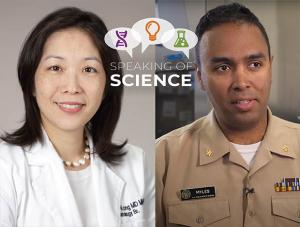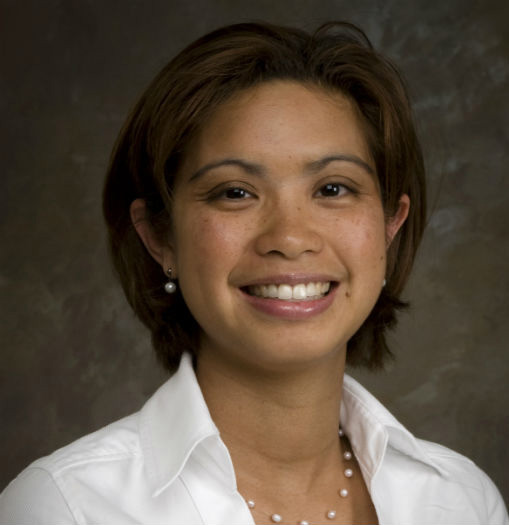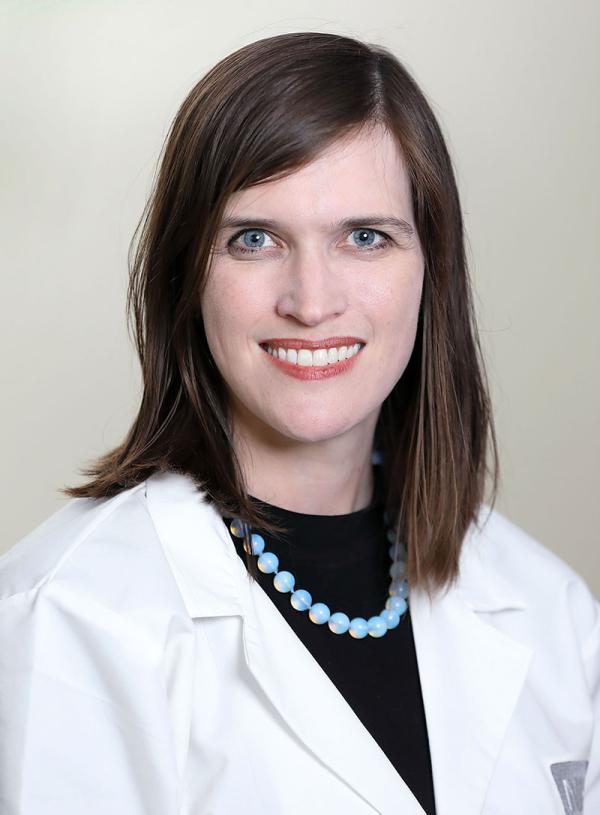Introducing NIH’s Newest Lasker Scholars
Program Gives Boost to Early Stage Investigators
If TV shows like The Voice and America’s Got Talent are any indication, there are many extremely talented people out there who could become huge successes if presented with the right opportunity. This is no less the case in science, with thousands of extremely bright individuals quietly toiling away in their mentors’ labs as they await the chance to establish research programs of their own.
Fortunately, initiatives like the NIH’s Lasker Clinical Research Scholars Program exist to boost promising young researchers on to the next stage of their careers. Every year, the Lasker program allows a small group of early stage physician-scientists to establish their own labs at the NIH and carry out independent clinical research there for at least five years.
The five talented investigators selected as 2020 Lasker Scholars are pursuing a wide range of research questions, from how the immune system influences blood clotting to the mechanisms driving a rare and devastating skeletal disorder. Read on to learn more about the latest crop of researchers ramping up IRP labs of their very own.

Yogen Kanthi: Inhibiting Immune Assault on Blood Vessels
Yogen Kanthi, M.D., is used to long journeys, having bused and backpacked his way through more countries than there are candles on his birthday cake, including a camping trip to the polar icecap in Greenland. More recently, his selection as a Lasker scholar triggered a 500-mile move from the University of Michigan to NIH’s campus in Bethesda, Maryland, where he is continuing his investigation of the immune system’s role in diseases that damage blood vessels and lead to potentially deadly blood clots.
Over the course of his career, he has also migrated from the clinic into the lab. A chance encounter with a physician-scientist during his medical residency “changed my view of research,” Dr. Kanthi says.
“I spent a couple of months in his lab and realized that a research career would be creative and fulfilling,” he continues. “In the research lab, I was able to ask and answer questions that would often come up during patient encounters.”
Dr. Kanthi’s research focuses specifically on the relationship between blood clots and inflammation in blood vessels. While at the University of Michigan, his team discovered that an inflammation-inducing chemical commonly found in the body can cause blood clots to form in veins and found a way to prevent this using an FDA-approved drug. More recently, in work done at the NIH and in Michigan, his lab has made important contributions to our understanding of how overactive immune cells and other components of the immune system contribute to breathing failure and the formation blood clots in some patients with COVID-19. He subsequently launched an ongoing clinical trial through which his IRP lab, along with colleagues at the University of Michigan, are testing a safe and inexpensive FDA-approved medication as a treatment for excessive inflammation and blood clotting in COVID-19 patients.
“The NIH has a unique environment that fosters curiosity-driven science to make big impacts on health and disease,” Dr. Kanthi says. “There is incredible depth of expertise here across a breadth of disciplines. The institutional and infrastructure support is unparalleled, and the NIH is able to launch projects that couldn’t be done anywhere else.”

Jacqueline Mays: Enabling Safer Transplants of Blood-Producing Cells
Jacqueline Mays, D.D.S., M.H.Sc., Ph.D., loves to bring smiles to people’s faces. As a teenager, she spent a year in Germany entertaining audiences as the sole American member of a traditional folk choir. Now, as a trained dentist, Dr. Mays works hard to preserve the health of her patients’ mouths and teeth.
“I grew up in a very rural community without fluoridated water and saw my family dentist frequently while growing up,” she says. “Both their gadgets and their ability to quickly help patients made a deep impression, and my initial career plan was to become a dentist. Fortunately, as I learned more about both dentistry and science, I discovered there was a clear path to combine them.”
Dr. Mays has been applying her skills in those domains at the NIH for more than a decade, most of which she has spent trying to combat the side effects of hematopoietic stem cell transplants, a procedure used to treat certain blood-borne diseases like leukemia. The procedure attempts to reboot patients’ immune systems by wiping out the defective stem cells in their bone marrow that produce blood cells and replacing them with properly functioning stem cells from a healthy donor. However, many patients who undergo this procedure develop chronic graft-versus-host disease, in which their new immune systems attack tissues throughout the body, including in the mouth.
So far, Dr. Mays’ efforts have produced important insights into how graft-versus-host disease affects the mouth, as well as how those effects might be more effectively assessed and alleviated. As the first dentist-scientist to be selected as a Lasker Scholar, she hopes to leverage the opportunity not only to bolster that important research but also to pave the way for more dentists to participate in the program.
“As a strong advocate of building an excellent and diverse pipeline of oral health scientists, I hope that this selection serves as a sign of the rigor of the oral health sciences and that more outstanding dental scholars will follow,” she says.

Ian Myles: Managing Our Microbial Managerie to Improve Skin Health
People often claim to know things “like the backs of their hands,” but in recent years it has become increasingly clear that what we see when we look at our hands and other parts of our bodies is not a complete picture. Teeming multitidues of organisms too tiny for the human eye to detect live on every inch of our skin, and scientists like Ian Myles, M.D., M.P.H., are determined to learn as much as they can about how these organisms — collectively called the skin microbiome — influence our health. In particular, Dr. Myles investigates how their interactions with the environment affect their ability to guide the immune system’s response to skin disease and damage.
“I went to medical school thinking I would go into research in spinal cord regeneration, but became fascinated by the way the immune system is able to tell the difference between the outside world and ourselves,” Dr. Myles explains. “The narrow margin for error afforded the immune system and the need to balance inflammation with repair grabbed my interest.”

More From the IRP
Podcast
Drs. Heidi Kong and Ian Myles — Derm Germs: The Human Skin Microbiome
Dr. Myles began his IRP career working in the Bacterial Pathogenesis Unit at the NIH’s National Institute of Allergy and Infectious Diseases (NIAID), which focused on skin infections caused by the bacterium Staphylococcus aureus. Now that he leads his own NIH lab, he is investigating how the bacteria that live on our skin are involved eczema, a common skin ailment associated with an increased risk of staph infections. His research team is currently running a clinical trial to see whether applying a different species of bacteria, Roseomonas mucosa, to the skin of eczema patients relieves their symptoms. The study so far has shown promising results, with the patients who received the topical bacterial treatment seeing “significant improvement in their disease,” according to Dr. Myles.
“I wanted the opportunity to work on a new approach to a common disease,” he says. “The Lasker program affords me the ability to take on challenges that I could not tackle as a postdoc. I enjoy the ability to take an idea directly from the bench and put it into an intervention that might improve the lives of patients and their families.”

Stephanie Chung: Improving Care for Youth with Type 2 Diabetes
Most weekends during her childhood, Stephanie Chung, M.B.B.S., and her sister accompanied their cardiologist father on his rounds and then played on the hospital grounds while he saw to his patients. When she followed her father into the medical field, she chose to specialize in both internal medicine and pediatrics, with a focus on helping young people with obesity and type 2 diabetes.
“Maybe it was the cartoons on the walls, or the fact that we had to learn how to play with the kids and examine, cure, and treat them all at the same time,” Dr. Chung says, “or maybe it was their innocence and vulnerability to the social, genetic, and environmental factors that mediate health disparities and childhood diseases.”
While she has been working with this population at the NIH since 2013, Dr. Chung’s selection as a Lasker Scholar will allow her to take her work to the next level. Her new lab aims to understand how genetic, environmental, and lifestyle factors contribute to the increased susceptibility of young people from minority groups to diseases like diabetes, obesity, and heart disease. She is also attempting to figure out why the drug metformin, a commonly prescribed treatment for type 2 diabetes, successfully lowers blood sugar in adults but fails to help roughly half of young people with diabetes. Already, her work has identified important differences in the way blood sugar behaves in young people and adults with type 2 diabetes and uncovered clues as to why metformin is less effective in children and teens.
In addition to furthering her research, Dr. Chung hopes the boost provided by the Lasker Scholars program will enhance her ability to assist and influence future scientists. As a Chinese Jamaican who grew up and attended medical school in Jamaica before continuing her medical studies in the United States, she is particularly dedicated to bringing people from diverse backgrounds into her field.
“I believe that success is born out of hard work that comes from people from all different backgrounds, experiences, abilities, and world views,” she says. “I love teaching and mentoring and I am committed to diversifying the scientific workforce and inspiring the next generation of leaders.”

Alison Boyce: Making Breakthroughs for a Rare Bone Disorder
Alison Boyce, M.D., has been a science enthusiast all her life, fondly recalling the many hours she spent watching the science-themed television program Mr. Wizard’s World as a small child. Later, the collaborative nature of medicine and the opportunity to witness first-hand how science affects people’s lives drew her to apply to medical school, after which she chose to specialize in the treatment of bone disorders.
“Bone is a really fascinating field because it requires you to think about biological systems on multiple levels,” Dr. Boyce explains. “Part of my research focuses on cell signaling and how different types of bone cells differentiate, but I also need to consider bone on a structural level — how it forms the scaffolding that moves our bodies through space and helps us interact with the world. Even small changes in bone biology can lead to huge impacts on health and well-being.”
At the NIH, Dr. Boyce’s research is focused on a rare bone disorder called fibrous dysplasia/McCune-Albright syndrome, in which bone progressively transforms into fibrous tissue, leading to fractures, physical deformities, and problems with movement, vision, and hearing. The condition also affects the delicate balance of hormones flowing through the body, potentially causing early puberty, thyroid issues, and other problems. In addition to examining numerous patients with the disease to learn more about their symptoms, Dr. Boyce’s team has identified promising therapeutic targets for the disease, leading to an ongoing clinical trial investigating whether inhibiting a protein called RANKL improves some of the disorder’s symptoms.
Along with the opportunity to work in the NIH Clinical Center and collaborate with other IRP experts in bone biology, Dr. Boyce believes her research benefits from all of the time she spends outside of work with her face buried in a book.
“I’m a big reader and usually finish one or two books a week,” she explains. “I especially like literary and speculative fiction. I think engaging your brain with stories helps people think more creatively, which is especially important in science.”
Subscribe to our weekly newsletter to stay up-to-date on the latest breakthroughs in the NIH Intramural Research Program, and check out our blog post on the 2019 class of Lasker Scholars.
Related Blog Posts
This page was last updated on Monday, January 29, 2024
